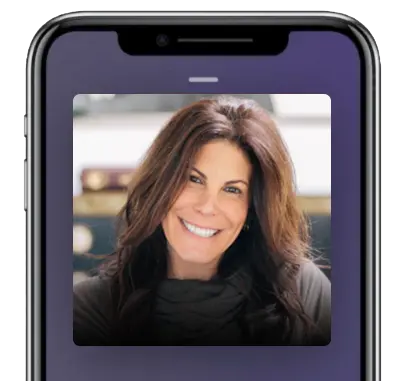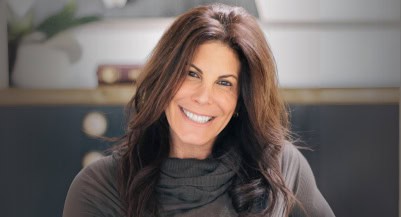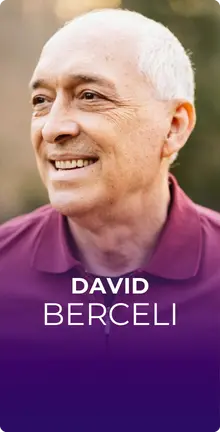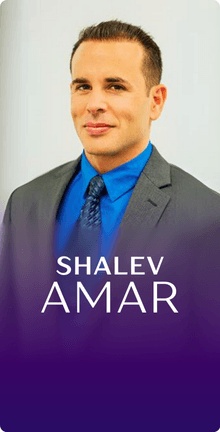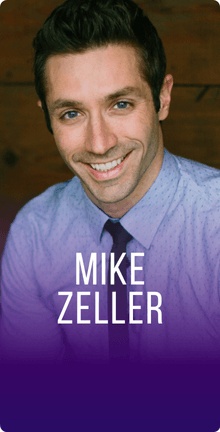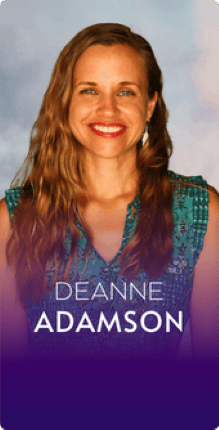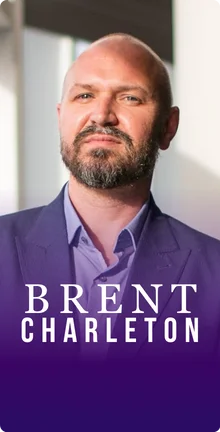In this Episode
- [02:38]Stephan introduces Ilene Smith, author of Moving Beyond Trauma, as she shares her background as a trauma therapist, entrepreneur, and mentor.
- [07:02]Ilene explains the distinction between somatic experiencing and trauma-release exercises (TRE), offering insights into several exercises for somatic experiencing.
- [13:30]Ilene and Stephan explore the idea that different parts of the body can store emotions.
- [16:50]Ilene recounts her experience of losing her husband, highlighting the value of moving through pain gradually.
- [20:48]Ilene unveils her morning rituals, and they both examine the role of fascia in the body and how trauma can manifest in various areas.
- [31:23]Ilene describes her journey from traditional therapy to exploring psychedelics to address lingering fears and shame.
- [42:30]Ilene emphasizes the importance of staying connected and creating safe spaces for others to heal.
Ilene, it’s so good to have you on the show.
Thank you for having me.
We know each other through the Genius Network and Joe Polish. I have read your book, Moving Beyond Trauma. I found it powerful. I’d love to start with your origin story of how you ended up creating that book because you went through quite a lot of trauma to have that kind of life experience and expertise to help others move beyond their trauma.
Great question. I went back to school in my early forties to become a therapist. At that point in my life, I had worked through a lot of the trauma that I had been through, or at least I thought I did. I was doing an internship at an eating disorder clinic, and I had struggled throughout my life with eating and exercise disorders. I was really quite curious. In the clinic where I was working, there were other therapists who were trained in what was called somatic experiencing, which was a therapeutic modality that was developed by Dr. Peter Levine, who was trying to understand why animals in the wild didn’t get traumatized, but people did.
The short version of what he discovered was that animals have an innate ability because they don’t have a prefrontal cortex to use the parts of their brain that are oriented more toward sensation. Basically, they’d have an experience where they were threatened, and then they would automatically have this biological reset, and they would shake off the trauma.
Animals innately know how to work with their own nervous systems. But we, as human beings, get interference from the higher functioning parts of the brain, which are more advanced, the prefrontal cortex. We try to override what our body wants by using our brain. What led me to realize in my own journey is that even though I had understood what the issues were in my life, where the trauma had been, and I had been doing things to really help myself.
Anytime we’re not feeling balanced, it’s basically an imbalance in the nervous system.
At that point in my life, I was less reactive, but everything sort of still felt like a management issue. I never really felt this sense of inner peace and calm. I was always sort of managing the anxiety or whatever the dysregulation was in my body, and I used a lot of exercise to manage it. I realized that ultimately, from this work, we have to bring the body into the healing process, that any form of maladaptive behavior, any time we’re not feeling balanced, is basically an imbalance in the nervous system.
Our brains can’t override what the body needs to learn. I got trained in somatic therapy and somatic experiencing. I just kept shaking my head. I had been in therapy my entire adult life. I’m saying how somebody who’s pretty well read in personal development has sat in a therapy room for years, how come this information about bringing the body into the healing process and the nervous system, and how humans need to find a way to regulate their systems, is not available?
That’s why I wrote the book, because I thought so many of the books that were available were more textbooks or oriented towards therapists, but they weren’t oriented towards the layperson, who was essentially still trying to understand why they understood their problems, and yet they still couldn’t manage whatever it was.
In somatic experiencing, the focus is more on the nuances of what your body’s doing and what the sensations are in your body.
Addiction, eating disorders, being reactive to people shutting down when there is conflict—all of the things that we know don’t make us feel whole or like we’re functioning fully in our own lives. That was really the impetus for the book, and I wrote it so that people could understand that they’re not alone in this journey.
How somatic experiencing and trauma release exercises (TRE) do differ, and how are they similar?
Somatic experiencing is a specific way Dr. Levine had uncovered to begin using talk therapy to lead to what’s in the body. Even though in somatic experiencing, you might be in conversation, the focus is more on the nuances of what your body’s doing and what the sensations are in your body. Essentially, what we’re doing is we’re helping a person who’s had trauma, who’s disconnected from their body. We’re helping them reconnect with their body in a healthy way and tolerate all those sensory experiences so that the body doesn’t go into a fight or freeze response, which is basically our survival physiology.
David Berceli has been on this podcast. He’s the creator of Trauma Release Exercises, TRE. He took my wife, Orion, and me through a sample session of doing these TREs. First, we had to kind of get to a place of remembering a traumatic event and then shaking involuntarily because your large muscles get so tired eventually after doing this particular exercise where you’re kind of pushing your torso up and eventually your legs, instead of buckling, they just kind of start shaking.
Our dreams are pathways to higher consciousness—each one a message guiding us toward clarity and deeper understanding. Share on XI was really impressed and amazed at how impactful that was, really letting go of some old trauma that I didn’t even think was an issue. I just thought of getting off over it, but remembering it and doing this exercise clarified something even more. I’m curious if there are similar sorts of exercises in somatic experiencing as well.
I love that you’re bringing this into the conversation because that’s a somatic modality to help release the trauma from the body. You’re bringing your mind back into an experience, and then you’re basically taking that experience, and you’re letting all that stuck energy in the body and all that emotional energy, you’re allowing it to come up and come out. It’s exactly what I was saying earlier about having that biological completion that the animals have.
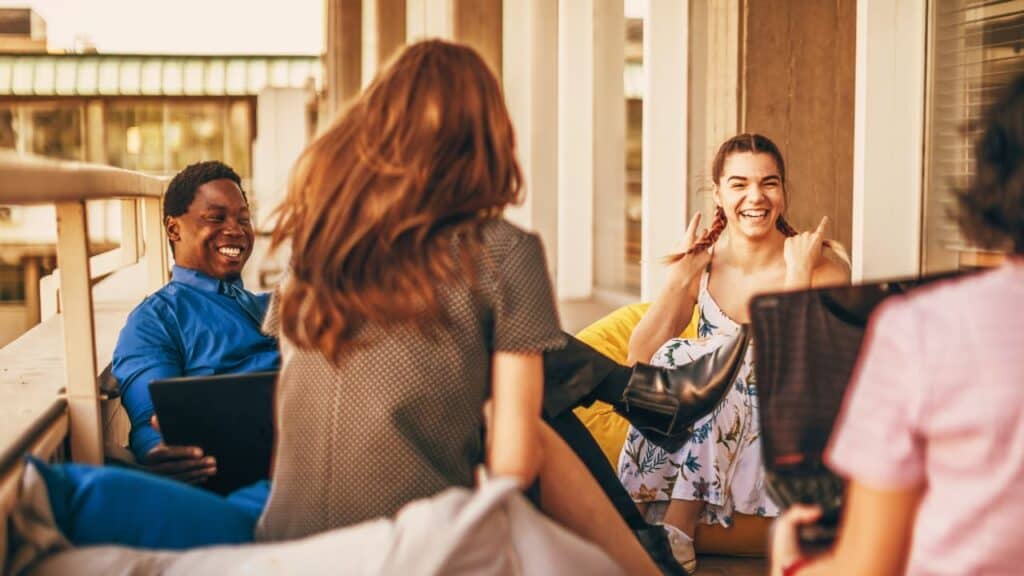
In somatic experiences, we do different exercises to bring a person back to safety. An exercise that might bring a person back to safety is, let’s say, somebody walks into a therapy room, and they’re coming from a busy and stressful day, and they’re not present. What we’re going to do is orient them back into the room. In a therapeutic setting, I might invite somebody to take a minute, feel their feet on their ground, and start looking around the room and noticing specific things in the room, like picking a color or noticing red objects in the room.
What that does is it brings that person back into the safety of the environment because if they’re not present, they’re usually probably somewhere else, somewhere in some sort of panic or dissociative state or trying to find some sense of safety. That would be a very basic exercise that we do.
A lot of times, when there’s been trauma, we lose a sense of where we start and end.
There are other exercises we do with the vagus nerve. There’s a voo exercise where you’re vooing, so there’s a little bit more nuance that wouldn’t probably be in a somatic experiencing setting. The exercises tend to be a little bit more subtle and more gentle ways to start bringing somebody into the body. However, all exercises are oriented towards bringing somebody back into the environment or the body. We do things like giving ourselves a hug and being able to feel the outer edges and the boundaries of our bodies.
Because a lot of times when there’s been trauma, we lose a sense of where we start and end. That’s about feeling your physical boundaries. There are many little exercises like that, but ultimately, we’re doing the same thing as you do in the shaking exercises. There are just different entry points to get somebody there.
That’s cool. This reminds me of an exercise I’ve done with Jaye Lasko. She’s an amazing practitioner who does muscle testing on herself while you’re on the phone with her. She’s helping to clear cellular imprints that you carry across lifetimes. First, it is important to pinpoint where these feelings or issues are in the body and what they relate to. Grief is related to the family in the stomach or the pancreas, and then what relates to which family member in that life, like which lifetime, or is it this lifetime? She’s doing all these muscle tests and having you repeat it.
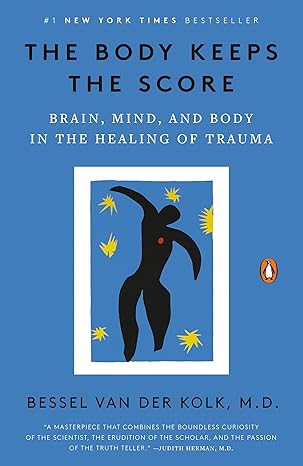
One of the exercises I did with her, she walked me through, was really quite amazing. She had me imagine my energy being just on the surface of my body but then a little bit out, like a couple of inches. Expand my energy several inches beyond the borders of my body and skin, then expand it to feel the room. Now, feel the city or feel the neighborhood with your energy. Now, feel the state, the country. Feel the world. Feel the solar system.
It just felt like I was so much more massive, etheric, and connected to God. And then she had me go backward after I got as far as I felt comfortable. And then back all the way to just under my skin.
We do some exercises like that. We’ll go through the layers of the skin in different ways. Ultimately, you’re trying to help a person bring in imagery, sensation, effect, and meeting. We have something in somatic experiencing called SIBAM, which is all the different channels: sensation, imagery, behavior, affect, and meaning. We’re bringing all of those elements into somebody’s existence so that they can start beginning. That’s how you’re going to orient your body through all those channels. It sounds like that was similar. She’s doing something similar as well.
Wow. You are a wealth of knowledge. How do you relate what you’ve studied and created to something like the body keeps the score and this concept of different parts of your body storing or trapping certain emotions? There’s the emotion code. There’s the body that keeps the score. What kind of overlap or what kind of wisdom do you pull from books, such as the emotion code and body character?
Bessel van der Kolk was one of the original. Early on, people were in the field of modern psychology. Bessel and Peter Levine. There’s a lot of overlap. The underlying theory behind it is all the same: we can’t resolve trauma. Talking about it alone, like talk therapy, is not going to do the job. Bessel van der Kolk and Peter Levine were the two who have led this over the last 30 years. Trauma healing is more than just going to cognitive behavior therapy. I think a lot of people are always like, “Well, why is CBT, cognitive behavior therapy so popular?
Those sorts of modalities, and I believe I think I talk about this a little bit in the book, is where the universities did all the research and, let’s just say, the 50s, 60s, or 70s. What that led to was, even though the evidence might not be super solid, especially for eating disorders and addictions, like CBT is not super effective, it’s what’s been used because we’ve had evidence-based research, and it was good enough. But now, what we’re seeing is that there are a lot more studies being done on the body-mind connection and the importance of trauma in the body. Also, we have neuroscience and imaging, which are things that are helping us see the impact of bringing the body into the healing process.
What is the standard way of dealing with an eating disorder or the death of a spouse? Because you’ve dealt with both. How should it be handled? Like being more effective and quicker in getting a result for the person going through that.
In order for somebody to really heal through anything, you have to be able to move past it.
I would say the first thing I would say about that is that there’s really no quick fix. In order for somebody to really heal through anything, you have to be able to move through it, to move past it. Our Western society has conditioned us to the quick fix. “Take the pill. After ten sessions of therapy, you should be fixed.” It doesn’t work that way. Healing from anything is a journey. Until you can settle into the pieces where you’re going to be uncomfortable, it’s really hard to have any shifts.
That discomfort is not here; it’s physical. I will say, like when my husband died. I tell this story often, and probably the best example I can use is that on day one, I could barely open my eyes, and the pain was that intense. The only thing I could do right was that day two was probably even more intense. There was an inflection point where it dropped down a little bit. But the only thing I could do to heal in that process was wake up every day and allow myself to experience, experience and feel the intensity of whatever I needed to feel. It wasn’t going to kill me. They were just feelings. I can tell myself that.
But then I have to let my body settle into it. It’s when you can build the body as your safe container to move through each experience, and then you start building some resilience and a sense of mastery over it. You start learning how to manage and handle things. Your body is resilient. It’s going to be able to handle whatever it needs to handle. I would say there’s no right or wrong way, but you have to move through it and know that the slower you go, the faster you’ll get there. But I believe you have to put things in place to help the healing process.
Everyday occurrences are not just coincidental but divine interventions. The key is in our awareness and trust in these moments. Share on XYou have to get up every day and find some way to get in your body. Whether it’s getting out for a walk, meditating, or yoga, there has to be some element of bringing yourself back in. There has to be a connection because one of our greatest healers, you can send a therapy room and do somatic work and all these things for years, but if you don’t learn to create a safe connection, it’s really impossible to heal.
Yeah, you’re getting in your body is so important. Even just the understanding that your body, soul, and mind are not all interchangeably the same; you’re not your body, you’re not your mind, you’re not your thoughts. It’s a necessary precursor to having a successful, happy and fulfilling life. One of the first things I do every morning is to thank God for returning my soul to my body. I just think that this is such a crucial component of life. What are your thoughts on that?
I’d be kind of curious. How do you bring your soul back to your body? Is there a ritualistic practice for you?

In Judaism, there is a ritualistic practice and a particular prayer called Modani, but I don’t know Hebrew. I know a little bit, so I don’t say it in Hebrew. I just have that thought, and I direct it to the creator. So, first, I acknowledge the creator. And then I’ll express my gratitude. I don’t even say it out loud usually. I just think it to him.
Yeah. So it’s about getting connected in the morning. The first thing that you do is get connected to a source in the morning. It’s moving beyond yourself. That’s a way for you to get back in your body.
What are your morning rituals that are most profound or impactful for you?
There are several. I’ve had to create rituals for myself in the morning because it’s the thing that helps me stay the most grounded and stay out of the anxiety. I wake up in the morning and start with hot water and lemon. I get on the foam roller and want to get in my body. The foam roller works with the fascia, which helps me get connected to my body. I write down ten gratitudes. It allows me to connect to the good feelings of embodiment, the things I can appreciate about my life, and I can take that into my day.
I always want to stay connected to the life force for myself.
Then I’m coming into my body by working with my fascia, that sheath of connective tissue that wraps around our whole body. It’s creating more circulation and connectivity to feel into my body so that I’m not dissociating from it. I think we do that a lot. We move around and go about our day, but we’re not even connected to the thing that’s transporting us from one place to another, helping us with our life force. I always want to stay connected to that piece of life force for myself.
You mentioned the fascia, and I want to say something about this. I used to believe the old adage that the skin is the largest organ of the body, but that’s actually false. I learned much later on that it’s the fascia.
Do we consider the fascia part of a layer of skin?
I don’t think it’s. I think it’s a separate organ. When you have an issue with your posture or hip pain or something like that because the fascia is such a web of interconnecting tissue, it might be an injury from years ago. The shoulder is now manifesting as hip pain because it’s connected through the fascia. Where weakness is, there’s another part of your body that’s overcompensating for it, and it’s due to the fascia trying to protect you from getting injured from those weak areas. Then, you’re weakening strong areas that eventually become problems.
If one trauma is not healed, then it’s going to impact and create compensation and weakness in other places.
That makes perfect sense. If one trauma is not healed, it will impact and create compensation and weakness in other places.
You mentioned yoga as a form of getting into your body. I’m curious about what forms of yoga you’re into and why. Or, what’s a replacement for yoga for you?
I love yoga. Over the years, as I was trying to find my way to healing, it was always a place for me to slow down and feel the sensory pieces of my body and connect to my body awareness. I love just a vinyasa flow yoga. I like yin and yoga nidra, which is yoga sleep. You can go in and just relax. Yoga is not always about movement; it’s about breathing. It’s about really being able to get connected with your breath. Any form of anything that allows you to get connected to your breath and to movement, to be able to feel yourself spatially, and to be aware of the presence of your physicalness is a good practice. People always ask, “What should I do?”
What I recommend is to experiment. Try different things. You’re going to find what works for you. You have to be willing to get curious about what’s available to you. It’s not like one thing’s better than another. One thing might be better for one person than another person. I really believe you have to find your way. But one of the things I believe is that you have to create if you want to really heal and create embodiment; it’s really the small things you do every day. Whether it’s five minutes on the foam roller, feeling your body drink a hot drink, rolling out the yoga mat, or lying down and doing breath work.
When you learn what your body needs and can really pay attention to what it wants, you’re going to know what’s right for you, and that’s different for each person. So, my practice in the morning might not work for somebody else. Somebody else might need to get up and shake off the trauma. Take a cold plunge or the millions of other things available to us to create embodiment and start that healing process.
Yeah. Infrared saunas, sun gazing, and many different modalities.
There’s so much good stuff out there. There’s not one that’s better than the other. They all have their own unique benefits. It’s just what your body needs and what your nervous system requires.
Do you feel fully healed and resolved about the loss of your husband?
I do. It’s an interesting piece to talk about because I’m as resolved as I think I can be for the moment. There are different layers of it. Do I feel traumatized when I go back and think about the experience? No. I actually feel really proud of myself for getting through it and how I handled it. It was the first time in my life that I stayed really connected to other people, and I let people support me, grew my sense of community, and came out the other side of it feeling more whole.
Recognizing that experience was there for the teachings. It was brutally painful, and I learned a massive amount about myself through it. When I think about what I’ve been through, I feel really proud of the person who came out on the other side. All of that is great. It’s interesting that you’d ask me, because two days ago, a dear friend of mine called me, and she said her husband died suddenly in the middle of the night. And I went back to, “Oh, my God.”
When you learn what your body needs and you can really pay attention to what it wants, you’re gonna know what’s right for you.
The first couple of days after my husband died, I really fell into what she was going through, and I got through it. I’m in a situation now where I can support somebody else really fully and comfortably. That’s a really solid indication for me that there’s been a lot of healing for me around it.
Have you received any kind of message from him? Any type of, without a doubt, signs that his consciousness is I have over there.
Yes, several along the way. A lot of messages in dreams. I’m really peaceful about where our relationship is now. So, I think if we’re paying attention, the messages do come.
Part of it, I think, has to do with asking if we’re fully utilizing all the support we have from our unseen support team. We’re asking all the time because if we don’t, the angels and all that are just sitting on the sidelines saying, “You know, I wish she’d ask. We can’t interfere with her free will, but if she’d ask, we would jump in and assist.”
Have you had any kind of experiences that are so otherworldly, supernatural, that are unlikely to have occurred by chance, but you can look at that as a connection with the divine, with my higher self, or with my support team, guides, angels?
I think they’re happening every day. I don’t believe anything’s an accident. I believe it’s all divine intervention, and it’s our job to pay attention to what’s being shown. Sometimes, we have more capacity to pay attention and look, but other times, we lose some of that awareness. But I think it’s happening every day, and it’s right in front of us, and we all have access to it if we choose. I believe that. Again, for me, it’s about staying really connected to that source. When my husband died, I had a transformative experience through his death, and I very quickly recognized that he left me exactly where I was supposed to be on my path, and he left the planet exactly where he was supposed to.
Healing isn't just a mental journey; our bodies hold stories and traumas that need to be unearthed and lovingly resolved. Share on XThat very quickly got me to a much higher level of trust because, at the end of the day, what we’re really talking about is, can we just trust and surrender to what’s being shown to us? But that’s a scary place to reside, but it’s really a place where you’re going to get the most peace. I don’t believe that we can find that space without building ourselves and our internal mechanisms in a safe way and that we see ourselves as the safe container because then we can really trust whatever else is going to happen along the way.
Yeah, well said. Where have psychedelics fit into this equation for you? Because I know you’ve got this miracle mastermind that you’re putting together or have put together, and it bridges that gap that helps bring those two worlds together of psychedelics and psychology. Clearly, we’ve shown your level of depth and expertise in psychology and all the modalities we’ve discussed, but what about psychedelics?
Well, I’m glad you asked. I closed my therapy practice about two years ago because I was kind of in this place in the last four or five years of getting to the last layers of what I needed to get to feel like I was in a place where I could spend more time in a flow state. I knew that there were things that were getting in the way. I started going down this path of exploring psychedelics, playing around, going to ceremonies and learning about the different kinds of plant medicines and other medicines.
I don’t believe anything’s an accident. I believe it’s all divine intervention, and it’s our job to pay attention to what’s being shown to us.
About two years ago, I said, “Okay, I’m done with this part of my life being a therapist. I don’t know what’s next.” I just took a deep dive in there with the psychedelics and the pieces of the work that I think I still needed to resolve. There was still some fear left. There was still some shame left, and there were still some places where I was betraying myself. So fear, shame, and self-betrayal. As I started working with the psychedelics and breaking through these last pieces,
I realized that I had taken myself through a transformative process and what I call the truth method. It’s the work that has gone into this miracle mastermind, and it’s really about bringing together. When I say psychedelics meet psychology, it’s really this piece of embodiment. It’s everything we’re talking about. So it’s taking all the trauma pieces, all the embodiment that we are not allowing ourselves to have because we’re still in our minds.
It’s bringing that together in a way that what the psychedelics do is they help us surrender so that we can break through the places that the mind is getting stuck to bring ourselves back into the body. Once we can bring ourselves back into the body, those things holding us back, fear, shame, and self-betrayal, will lose their charge. In the mastermind, we work with an entire therapeutic process that helps us step into all the pieces of ourselves that we keep turning away from.
Once we’re in there, we work with the psychedelics to learn how to surrender to all those pieces and break through to the other side so that we can embody what we’ve been avoiding. Our lives that were let were. Basically, you’re let out of prison, and you’re totally free at that point. You are in a complete space of freedom. When you’re in freedom, you can go into flow. That’s really the big idea of the mastermind.

It’s about helping participants get out of the places where they’re stuck so that they can live their lives fully and fully. It’s a really powerful process. It’s a year-long process. What it does is it takes somebody through an incredible transformative experience.
Which psychedelics have been most transformative?
For you, why are there different things at different times? I’ve done a lot of psilocybin. I’ve done ayahuasca and DMT, I’ve done all of them, and they’ve all given me different things. Right now, what I’m really drawn to is the MDMA and psilocybin together. I think that’s the mind and soul-opening. I think it’s a heart and soul-opening. I think they’re empowering and impactful, especially with people starting this journey. At first, they’re non-threatening, and they really allow somebody to open up themselves in a way they never have before.
I really like that combination right now. I think it’s a lot of impact, and I’m in the zone right now, and this changes too. I don’t think we necessarily need to go to really intensely uncomfortable places to have breakthroughs, even though a discomfort, I see discomfort is really important. I know this combination is. I’m being called to right now in a big way.
Once we can bring ourselves back into the body, the things that are holding us back, fear, shame, and self-betrayal, will lose their charge.
Cool. Have you had an experience of feeling or being part of the oneness? I interviewed Deanne Adamson, and she had some profound experience with Bufo we talked about. I’m curious if you’ve had anything like that.
I had an experience with Bufo where I literally felt myself going through the womb and into another dimension. Any doubt I ever had that there was more showed me that there’s so much more than what we’re seeing and what we can even uncover in one lifetime.
That’s beautiful. Was that recent?
It was a couple of years ago, and I was blown away by what was revealed. It showed me that we’re here having these experiences, perceptions, and what we think is reality. But reality is so much more than what we even have. We know we’re just seeing a small piece of it.
What have you changed in your life because of that realization or that insight?
All the fear is gone, like I have. There’s nothing left to fear because I’ve gone to the depths of places that were pretty scary and unknown. I think so much of what we fear is what we don’t know, and it’s almost irrelevant. Whatever it is, it’s going to be. It’s all okay. There’s so much more beyond just here. It’s almost like I’ve been able to go into a curiosity about the unknown versus the fear of being fearful of the unknown. That’s been impactful for me. It’s allowed me to go about my life in a different way and not be scared. I’m not scared to take chances anymore. What’s the worst that could happen? It doesn’t work out.
When you can build the body as your safe container to move through each experience, you start building some resilience and a sense of mastery over it. Share on XIt’s like playing a game of Monopoly or something. What’s the worst that could happen?
What’s the worst that could happen? It’s going to be okay, even if it’s not okay. I think that’s been the biggest piece for me, which is to let go of all of the stories and ideas I’ve had about what it should be or how it should be. It doesn’t matter. Whatever it’s going to be is going to be. That’s the beauty of life, which is surrender. It’s like, that’s all we’re getting to. At the end of the day, through all the psychedelics, through this miracle mastermind, through whatever process we go through, we come back to the biggest piece of it all.
Can you surrender and be open-hearted to the experience, whatever that experience is? Good, bad, ugly, painful, joyful, or blissful. It’s all about the surrender to it. That’s what I want to show other people and to reveal to them that if you can go into a state of surrender, like, your life is so free and so powerful, and you become so much more impactful to yourself and others, and that’s what we’re here to do. At the end of the day, I don’t care how you slice it or dice it. We’re here to connect.
And we’re here to impact others and grow closer to God.
If you can go into a state of surrender, your life is so free and powerful, and you become so much more impactful to yourself and others.
We’re here to find purpose. You can look at it in a million different ways. But the purpose is about connection and impact.
It’s much easier to see that and say that when we’re feeling connected and aligned on purpose and mission. It’s a lot harder when you’re going through trauma and you’re just experiencing a ton of anxiety. How do you assist somebody getting out of that fear to fight and freeze response and the anxiety, the panic attacks or whatever form their trauma is surfacing into a place where they can feel that depth of their soul and their connection to all that is obviously the somatic experiencing and all that we’ve been talking about.
It has to be action, right? This is the part where there’s willingness or willfulness, and every human being has that choice. The willingness means you have to do something that’s going to be so out of your comfort zone and so uncomfortable and exactly what you don’t want to do when you want to put the covers over your head, you got to. I went through this with my when my husband died. It’s like every day, I had to get up, get out of bed, and make a connection, but I didn’t want to. This is what the willingness was like. Healing becomes a choice. Every person has to make that decision. And it requires you to do lots of things that you don’t want to do, but what’s on the other side of that is powerful.
You don’t have to do a lot. You have to do something to move you in the right direction when you don’t think you can get out of your own way. And that right thing might be, I don’t want to leave my house. Well, walk down to your mailbox, check your mail, go out to the store, talk to one person, and create a connection because it is, as I said, we know this. It’s like energy moves energy. If the energy is stuck, you have to choose to move it.
What’s that one thing that your friend is doing, or you’re helping her who just lost her husband two days ago?
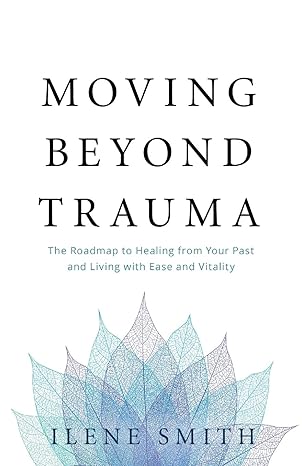
It’s staying connected. It’s making sure that her children are here right now, and when the dust settles, it gets quiet over there because it will. Because about two or three weeks after the death, it gets quiet went through. This is to make sure that that person is still staying connected and to remind her every day of the value of connection and to make sure I’m there to support her in that connection and to be a good friend and to be of service to somebody else and to help her get out of her own way when she can’t.
Oh, you’re a very good friend. That’s amazing. Well, this was a really powerful discussion. Thank you so much for sharing with vulnerability and transparency. If our listener wants to work with you, join your mastermind, your miracle mastermind, or get coaching from you if that’s an option. What are the options for them to work with or learn from you? Where do you want to send?
They can visit my website, ilenesmith.com, or DM me on Instagram @theilenesmith. Either way, this is how you get in touch with me.
Okay, awesome. Well, Ilene, this was a pleasure. Thank you for the beautiful book that you’ve written and for changing so many lives. So again, that’s Moving Beyond Trauma. Go out there and make a wonderful week for yourself and others. We’ll catch you in the next episode.


